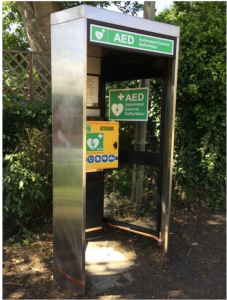Duns Tew is a village about 10 miles south of Banbury in North Oxfordshire. With nearby Great Tew and Little Tew, Duns Tew is one of the three villages known collectively as “The Tews”.
The centre of Duns Tew is designated an area of special architectural and historic interest to be preserved and enhanced.
The origins of the village name would seem to date back to Anglo-Saxon times, where a “Tiewe” described a ridge of land, or meeting point of two different types of soil. Duns Tew is situated on the North Aston fault, separating clay in the north from limestone & sand to the south.
Duns Tew can be found in the Domesday Book of 1086 – a copy of the entry can be found in the church. At this time the population of the village numbered 53. This has fluctuated over the centuries, reaching a low of 14 after the Black Death. Today, by comparison, Duns Tew has a population of just over 500.
Welcome Pack
We hope that the information contained in this Welcome Pack will help you to settle more comfortably in your new home and the village. We have tried to gather as much useful, up to date and relevant information as possible.
If you know of anyone who needs a welcome pack, please contact Juliet Semple
Newsletter
A dedicated group of volunteers deliver the monthly village newsletter to your home. The newsletter is produced each month by Susan Birks
Newsletter archive and subscription information here
The White Horse Inn
The White Horse is a quintessential 17th century English coaching inn set on the eastern side of the Cotswolds in the charming village of Duns Tew.
With original flagstone floors, beams and real fires. The White Horse has a relaxed and friendly atmosphere making it the perfect place to enjoy a drink or meal with friends. Our south facing terrace is perfect on warm days. Well behaved children and dogs are welcome.
The White Horse has greeted travellers for the last three hundred years. Little is known of the early history of this late 17th century hostelry, but there was certainly an Inn here. Inn keepers are recorded here up to the present day, with its own brew-house run by a Maltster, in the early 17th century. The brew-house is now the site of the gents’ loo. Towards the end of 1981 The White Horse was remodelled with the addition of a dining room, but it was still a true Inn as there was stabling and fodder for a traveller’s horse as well as Bed and Breakfast for the rider. In the last decade of the 17th century the White Horse was again developed to the arrangement seen now, with a new Kitchen, Dining Room and Bar, in a traditional style, and extended bedroom accommodation.
https://dunstewwhitehorse.co.uk/
https://www.tripadvisor.co.uk/Restaurant_Review-g1096367-d3541558-Reviews-White_Horse_Inn-Duns_Tew_Oxfordshire_England.html?m=19905
Public access defibrillator

An Automated External Defibrillator (AED) can be found in the old BT telephone box opposite the entrance to Daisy Hill Farm on Main Street (in between the church and the pub). The cabinet is unlocked to ensure 24/7 easy access. If you have cause to use the defibrillator please, after use, contact Councillor Juliet Semple (01869 349214) or Jean Ralfe, Parish Clerk (01869 349012) so they can ensure the pads and batteries are replaced. If you see anyone either vandalising or attempting to steal the defibrillator please contact the police immediately on 999
Poors land
William Raves (d. 1631) by will left £40 to be loaned ‘on good security’ free of interest to the poor of Duns Tew, no one to receive more than £5 or less than £1. In the late 18th century there was uncertainty over the terms of the bequest which, it was thought, should comprise £40 to be lent with interest and £40 without. The actual money available had shrunk to £19. By 1825 the trustees believed that interest should be charged on loans to landholders but not on loans to tradesmen; at that date £33 was on loan, £10 was in the hands of the vicar, and £17 had been written off as bad debts. Interest received was paid out in money and fuel at Christmas.
Elizabeth Chamberlain (d. 1819) bequeathed £5 5s., the income to be distributed to the poor of Duns Tew as her executors saw fit. They gave away 5s. and invested the remainder, the interest being distributed with the Raves bequest at Christmas. The capital of the two charities had increased to £41 by 1868 and to £58 a century later, when the income was £1 8s.
At enclosure in 1794 c. 5 a. was allotted as poors’ land in exchange for furze-cutting rights. Rent from the land was £12 12s. in 1825, £15 in 1871, and £20 in 1971, the money used to buy coal which was distributed at irregular intervals.
Amalgamation of all the charities was proposed repeatedly from 1969 but postponed in 1974 for the lifetime of the then tenant of the poors’ land.
Charity Number 203638
